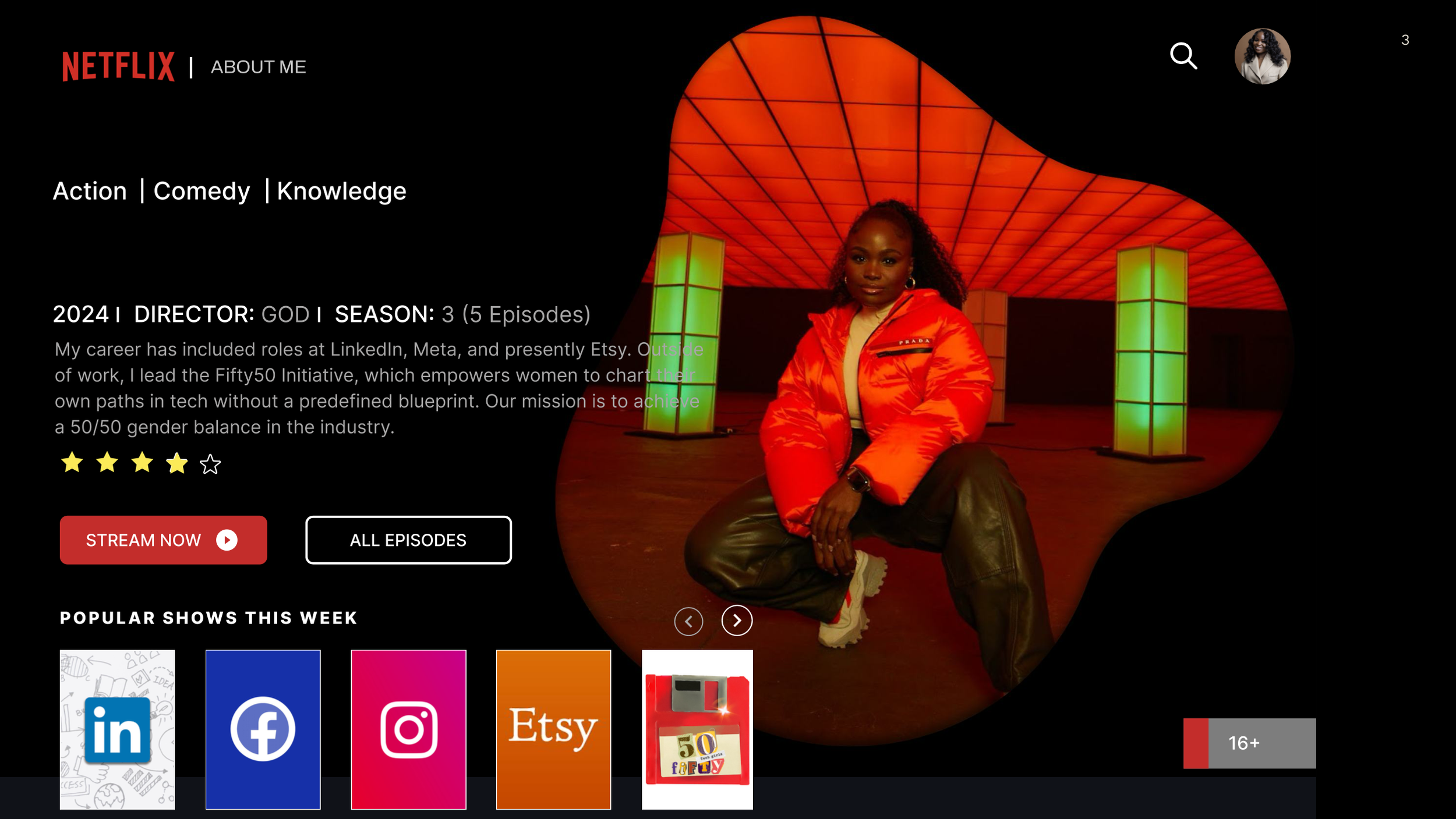Binge-Worthy: Building a UX Portfolio That Keeps Them Watching
Think about your favorite Netflix series—the kind that hooks you in from the first episode and keeps you up for the following nights clicking next episode.
For me, that’s easily Nobody Wants This.
Now imagine if your UX portfolio could captivate a recruiter or hiring manager in the same way.
Here’s how you can craft a portfolio that grabs attention, keeps your audience engaged, and leaves them eager to learn more about you.
💡Act 1: Crafting Your Story
Just like every binge-worthy series starts with a compelling premise, your portfolio needs a strong narrative. But before diving into your projects, ask yourself: Who is this story for? As UX professionals, we design with the user in mind. Your portfolio is no different. The “users” of your portfolio—recruiters and hiring managers—each have unique needs:
• Recruiters: Skimming for highlights to ensure you meet basic qualifications.
• Hiring Managers: Digging deeper to understand your process, problem-solving skills, and how you approach challenges.
Once you understand your audience, structure your portfolio using the binge-worthy framework below:
Hook: Start each project with a strong introduction. Answer the questions: What was the problem? Why was it important? Why now?
Example: Instead of “I redesigned an app,” try “I improved onboarding for a healthcare app, reducing user drop-offs by 20% in three months.”
Build: Showcase your process. Don’t just list the steps—share your thinking. Why did you choose specific methods? How did you adapt to constraints like tight deadlines or small budgets?
Example: “Due to a short timeline, I prioritized guerilla testing over formal usability studies to get quick, actionable feedback.”
Payoff: End with the impact. Share measurable outcomes and tie them back to business goals.
Example: “My redesign increased sign-ups by 30% and reduced customer support tickets by 15%, directly contributing to a 10% revenue increase.”
Pro Tip: Compare a weak hook to a strong one. A weak hook is generic and forgettable, while a strong hook sets the stage and sparks curiosity.
🎥 Act 2: Showcasing Your Process
Your portfolio isn’t just about the what—it’s about the how. Hiring managers want to step into your mind and see your thought process.
Here’s how to make your process shine:
1. Let Your Audience into Your Mind:
Share the decisions behind your actions. Why did you take this approach? How did you balance user needs with business goals?
Example: “Our users struggled with navigation, so I ran usability tests to pinpoint pain points and collaborated with the dev team to implement a more intuitive menu structure.”
2. Choose Impactful or Relevant Projects:
Highlight projects that showcase your best work or align with the role you’re applying for. Even small projects can shine if they demonstrate clear thinking and impact.
Example: For a research-heavy role, emphasize your user research methods and insights.
3. Provide Context:
Always include the why behind your projects. What problem were you solving? Who were the users? Why was this work important?
Without context, even the most beautiful designs lose meaning.
Pro Tip: Use a simple framework for case studies:
• Problem: What was the challenge?
• Approach: How did you solve it?
• Outcome: What were the results?
🤌🏾 Act 3: Making It Irresistible
Act 3 is the most important part of creating a binge-worthy UX portfolio. It’s where you take everything you’ve crafted—the story, the process—and make it shine with a personal touch.
I’ll be diving deeper into this at the Techsgiving Conference in December!
Whether you’re transitioning into tech or navigating a career pause, this is your chance to connect, learn, and grow.
Can’t wait to see you there!
📆 December 11-14
📍Washington D.C.
Use my code code 'TA' to register here: https://lnkd.in/gCPi_iDg
〰T.
